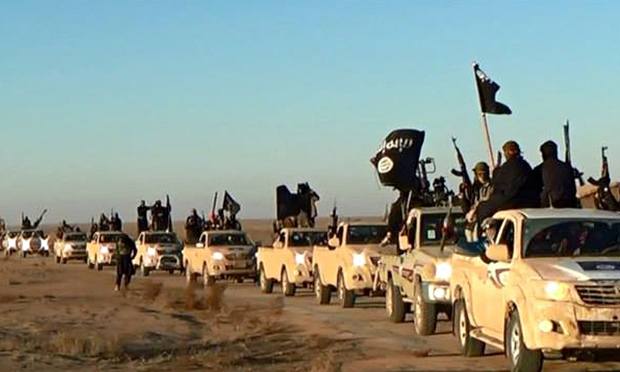What is ISIS and What Does it Want?
If nothing else, the murderous attacks by ISIS in Paris on Nov. 13 got the entire world to take notice that the terrorist organization poses a serious threat to those it considers its enemies. With that notice come questions as to exactly who or what ISIS is and what is it that it wants?
The advent of ISIS essentially grew out of the United States and coalition forces invasion of Iraq in March 2003, though its seeds were planted somewhat earlier. With the U.S. taking control of Iraq in 2003 came a period of political fragmentation for a country that was not prepared for it.
Socially, tensions were high, growing out of the severe barrier between Sunni and Shi’ite Muslims in the region. After the U.S. dismantled the Sunni-dominated government and military of Saddam Hussein, Iraq was left with no security and/or governmental structure intact.
After nine years of U.S. forces occupying Iraq, the mission of filling that void with a security and governmental structure was in vain. One of the failed attempts included establishing a democratic Shi’ite regime led by Nouri al-Maliki. This resulted in alienation of the majority Sunni people. The environment was perfect for a rebellion.
al-Qaeda grabbed the reins of rebellion and led a trail of hellfire through Iraq. This rebel group was key to the fight against the American army stationed in Iraq as it was already an established terrorist network. Its role grew with power when the U.S. military withdrew from the country at the end of 2011. The same year, al-Qaeda spread to Syria when that country’s civil war broke out.
al-Qaeda’s presence in Iraq began when Abu Musab al-Zarqawi went there in 2002. One of al-Qaeda’s determinations was to create a global jihad: the holy war against those not of the Islamic faith. al-Zarqawi eventually established his own organization titled “al-Tawhid wal-Jihad” (the oneness of Allah and jihad).
When the U.S. and coalition forces invaded Iraq in 2003, al-Zarqawi and his organization joined arms with the insurgents to fight the American troops. In October 2004, al-Zarqawi’s swore allegiance to Osama bin Laden and al-Qaeda. The result was the first branch of al-Qaeda being established beyond the borders of Afghanistan and Pakistan in Iraq with al-Zarqawi as its leader.
al-Zarqawi laid down his strategies for the global jihad which included harming U.S. forces and their allies, discouraging Iraqi interference by targeting government infrastructure and personnel, targeting reconstruction efforts, and drawing the U.S. military into a war between the Sunni and Shi’ite by targeting Shi’ites.
al-Zarqawi’s strategies were criticized by both Osama bin Laden and his deputy Ayman al-Zawahiri. They believed the killing of random civilians would encumber public support for al-Qaeda throughout the region. They instructed al-Zarqawi to cease attacking cultural and religious Shi’ite locations. With his refusal, al-Zarqawi relations with al-Qaeda came to an end.
On June 7, 2006, Abu Musab al-Zarqawi was killed in an aerial strike carried out by the U.S. Abu Hamza al-Muhajir succeeded him and about four months after the death of al-Zarqawi, an umbrella network called the Islamic State in Iraq (ISI) was established for Sunni jihad organizations.
ISI originally came from western Iraq, which had a tribal Sunni society. Many attacks against the U.S. forces and the Shi’ite affiliated Iraqi government were conducted in retaliation of the death of al-Zarqawi from 2006-2007. Meanwhile, ISI began building a civilian administration within the Sunni population as an alternative to the main government.
Between 2008 and 2011, ISI’s influence waned, a U.S. military campaign that had assistance from Sunni tribesmen against the jihad group being a major factor. These tribesmen organized into groups called “awakening councils.” When the U.S. began to withdraw from Iraq, these councils decreased and the reinstated security began to deteriorate. This political instability was the womb for a soon to be born campaign against the Iraqi regime conducted by Sunni Muslims.
After Iraqi security and U.S. forces killed two major ISI figures in April 2010, the leadership position was inherited by Abu Bakr al-Baghdadi who remains the authoritative figure in ISIS today. With the December 2011 withdrawal of U.S. forces, ISI’s gained more power and renewed its terrorist campaign against the Shi’ite population and the Iraqi government.
In January 2012, ISI operatives established the al-Nusra front, a jihad organization headed by Abu Muhammad al-Julani that supplied an additional power base outside of Iraq. A power struggle between the al-Nusra Front and ISI led to the eventual establishment of a new organization: The Islamic State in Iraq and Greater Syria or ISIS.
Tensions grew between ISIS and al-Qaeda, and on January 3, 2014, al-Qaeda leader al-Zawahiri severed all ties al-Qaeda had with ISIS. In February 2014, ISIS responded in a public statement attacking the al-Qaeda leadership and the al-Nusra Front. Abu Muhammad al-Adnani accused al-Qaeda of “straying from the correct path,” saying al-Qaeda was no longer the foundation for jihad and that ISIS was the only jihad organization sticking to the vision of Osama bin Laden and Abu Musab al-Zarqawi.
Contrary to the practices of al-Qaeda, ISIS gained a reputation for using brutal force on the local population and its rivals based on the al-Zarqawi legacy with the goal of establishing Islamic religious law in every region it gains control of.
ISIS has grown in strength since its split with al-Qaeda. This is most likely due to the attraction of its ideology, its brutal military achievements, and the many resources it has acquired. This strength is depicted in the fact that commanders and entire units of other rebel organizations continue to join ISIS as do jihad foreign fighters, including those from Western countries.
ISIS has also gained the support of much of the Sunni opposition in Iraq, and allegiance has been sworn to ISIS by jihad organizations beyond the borders of Iraq and Syria.
ISIS has been around for years, yet their name is growing in infamy and citizens everywhere are weary of when the next tragic incident will occur. But the question remains: What does ISIS want?
In the March issue of The Atlantic, Graeme Wood attempted to answer that elusive question. According to Wood, ISIS is an extremely fundamentalist Muslim organization advocating a strict adherence to the Koran and regards itself as responsible for fulfilling its apocalyptic prophecies.
Having established a caliphate (a form of Islamic government) in Iraq, ISIS wants no interference from outside influences. It also wants to increase the territorial holdings of the caliphate and expand into non-Muslim territory spreading a strict observance of Sharia law.
What ISIS also wants is for the U.S. to invade – put boots on the ground – its territorial holdings because, as has been proven in the past, nothing does more for terrorist organization recruitment and to radicalize Muslims worldwide than for U.S. forces to wage war in and occupy Muslim lands.
The problem now facing the U.S. and its coalition countries is how to effectively eliminate the power and influence of ISIS without playing right into its hands.











